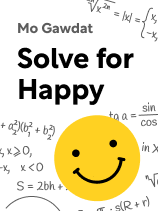

This article is an excerpt from the Shortform book guide to "Solve for Happy" by Mo Gawdat. Shortform has the world's best summaries and analyses of books you should be reading.
Like this article? Sign up for a free trial here.
What’s present-moment awareness? Is it the same as mindfulness? How can you practice it?
Mo Gawdat suggests that, for happiness to endure, we must embrace five pillars, which he calls “ultimate truths.” These five pillars lead to joy—an unwavering state of happiness. The first of these pillars is present-moment awareness.
Read more to learn about this practice and the difference it can make in your life.
Present-Moment Awareness
Gawdat’s discussion of present-moment awareness dovetails with his discussion on the misconception of time, where he argues that only the present moment exists. Accordingly, he asserts that, to be happy, you must spend time fully aware of the present moment. In particular, cultivate presence to reach awareness.
(Shortform note: In essence, this concept amounts to an endorsement of mindfulness, the practice of focusing your attention on the present moment. Research has vindicated the effectiveness of mindfulness and demonstrated that increased mindfulness is linked to improved self-reported well-being and decreased anxiety and depression.)
Present-moment awareness is when we’re in touch with our surroundings and fully grasp the world. Because we’re inundated with distractions, however, Gawdat concedes that awareness is difficult. Yet, he asserts that present-moment awareness is actually our default state—as soon as you open your eyes with the aim of becoming aware, you’ll become aware.
(Shortform note: When we stop focusing on the outside world, neuroscientists hold that the default mode network becomes active. This network leads to increased introspection, like daydreaming and ruminating on the past, and studies show that mindfulness decreases this network’s activity. So, awareness doesn’t seem to be our default state—rather, our default is introspection, and we can cultivate awareness to resist this default.)
To return to this default state, Gawdat offers several concrete strategies, such as:
- Prioritize awareness: Prioritize awareness by, for example, writing down every positive event or note when your mind drifts.
- Reduce distractions: Incorporate quiet times into your schedule, or spend time without access to your phone.
- Make a totem: Select an item that reminds you to be present. Keep this totem with you, and whenever you notice it, take a brief awareness break.
By embracing these suggestions, you’ll be able to incorporate awareness into even the busiest days. Consequently, you’ll come to recognize the joy of total presence.
| Further Strategies to Increase Awareness In addition to Gawdat’s more general advice, researchers recommend other methods to maximize awareness through specific practices and regular habits. These supplementary steps include: • Concentrate on your breathing to begin. This strategy is especially helpful for beginners seeking to orient their thoughts around the present. • Listen to your inner voice. In particular, pay attention to critical voices, so you can eventually learn to control them. • Practice daily. Incorporate small, daily sessions into your calendar. This reinforces mindfulness habits and ensures that you’re prioritizing awareness. • Consider joining a mindfulness community (a “sangha”). This allows you to learn from more experienced mindfulness practitioners and alleviates feelings of isolation. |

———End of Preview———
Like what you just read? Read the rest of the world's best book summary and analysis of Mo Gawdat's "Solve for Happy" at Shortform.
Here's what you'll find in our full Solve for Happy summary:
- The six misconceptions that cause us to suffer
- How to remove the seven weaknesses that hinder your happiness
- The five pillars to becoming permanently happy






